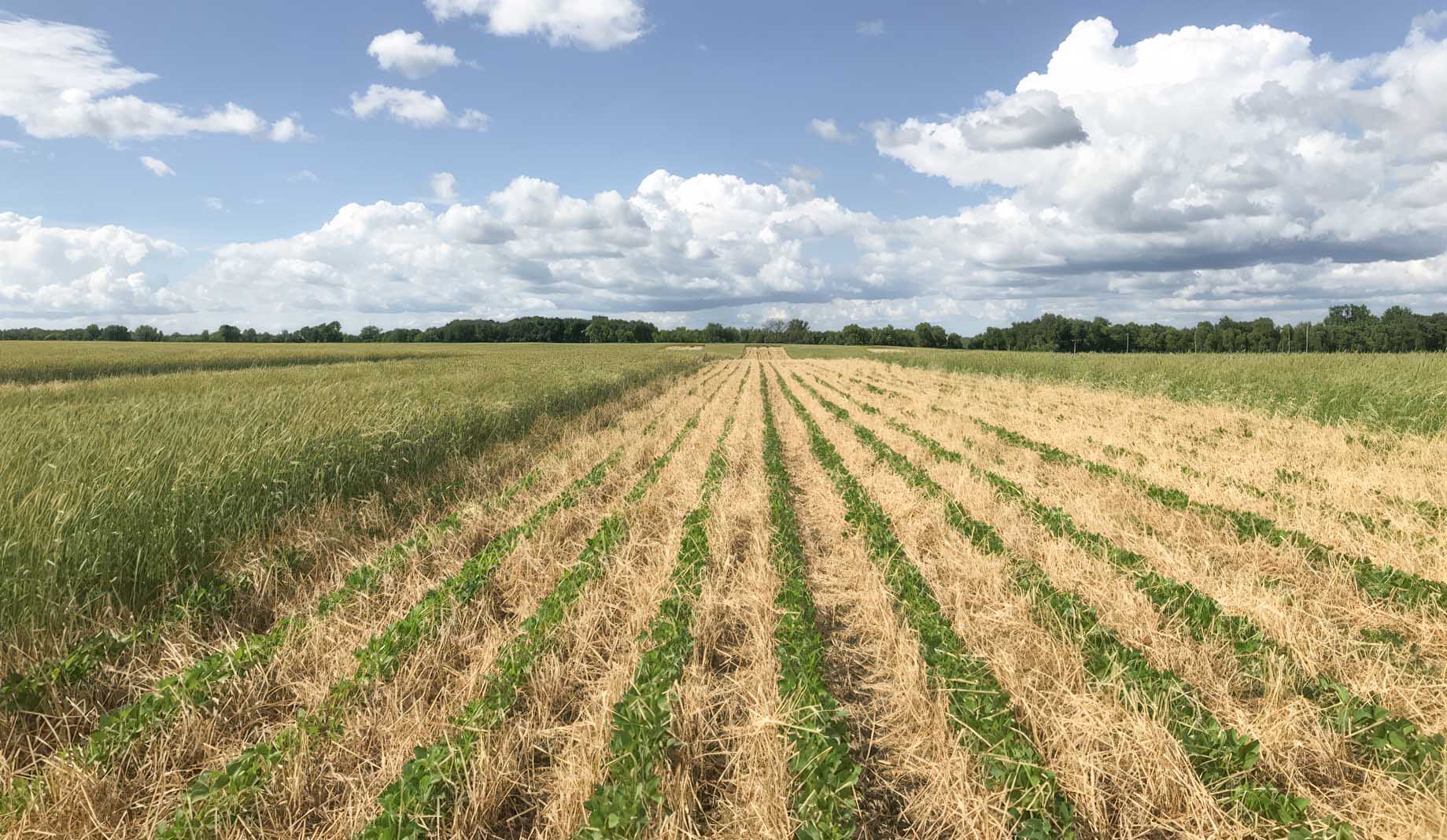
(Photo: Iowa Soybean Association / File Photo)
Can farmers benefit from raising both cereal rye and soybeans?
June 28, 2024 | Lucas De Bruin, CCA
In a relay cropping system, soybeans are planted into a growing cereal grain, such as cereal rye. As the growing season progresses, the soybeans will reach maturity and be harvested. This practice allows farmers to harvest two crops, rye and soybeans, from a single field in the same growing season. It also maintains living roots all year long in the soil, scavenging leftover nutrients that have not been used by the previous crop.
Both crops grow together until the rye matures and is harvested in July over the top of the soybeans.
To delve deeper into this cropping system, the Iowa Soybean Association (ISA) partners with farmers to conduct relay cropping trials.
Planning for success
Pre-season planning in the fall helps ensure success of the relay crop. When considering nutrient management, treat each crop — rye and soybeans — individually for its fertility needs. A nitrogen application is recommended for the rye in early spring before the cereal rye reaches the jointing stage. The recommended rate of nitrogen is between 35 and 60 pounds per acre. Over-applying nitrogen can lead to a large amount of biomass which can be detrimental to soybean yield. If applying fungicide to rye, the recommended growth stage is Feekes 10.51, which is when the heads are fully emerged with extruded anthers.
Soybean row spacing of 30 inches or wider is commonly used in relay cropping. This width allows field equipment to run over fewer beans during rye harvest.
Relaying crops may allow for omitting a pre-pass herbicide application, but some farmers opt to do a post-pass application after the cereal rye is harvested to clear late-emerging weeds from the soybean fields.

Relay cropping challenges
Relay cropping can present additional challenges in the growing seasons.
For planting soybeans, common obstacles include sufficient subsoil moisture, planting date and density of the rye stand.
Another notable challenge is that relay cropping is a high-water-use system. Even with adequate early-season moisture, a dry July or August can cause soybean yields to suffer.
Concerning issues could occur during the rye harvest. Perfectly straddling soybean rows can be difficult for the combine tires, resulting in flattened soybeans. Additionally, the height of the soybean and rye heads may vary across the field. Draper heads minimize losses when clipping rye heads above the soybean canopy.
Trial results
Some of what has been learned can be utilized in a system with wheat or other cereal grain, but additional research is needed outside of rye.
Trial history shows positive outcomes when the soybean maturity is increased and rye is harvested as early in the season as possible, maximizing both soybean growth and rye yields. Yield loss results are presented in Figure 1.
For every increase in maturity point, soybean yield loss was reduced by 0.8 bushel per acre, as shown in Figure 2. For every day after July 1 that rye was harvested, soybeans lost an additional 0.9 bushel per acre.
Relay cropping may not be suitable for every farm, but it offers a range of benefits such as increased diversity, continuous ground cover and an additional source of revenue for soybean producers as they are able to sell the rye for seed or to a feed mill. Ongoing research is being conducted to fine-tune the management recommendations for relay cropping.
If you are interested in learning more about relay cropping trials or other research projects, contact your local ISA research agronomist for more information.
Editor’s note: Lucas De Bruin is a research agronomist for Iowa Soybean Association but has also been a farmer participant in the relay cropping trials on his farm in Oskaloosa County. His experience as a farmer and as an agronomist has added a unique perspective to the on-farm research results.
Back